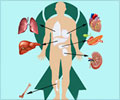The role of oxygen in cell transplantation has been investigated in two studies published in the current issue of Cell Transplantation.

In a second study, Brazilian researchers found that neural cells derived from induced pluripotent stem cells generated from skin fibroblasts of a schizophrenic patient show extra oxygen consumption and elevated levels of "reactive oxygen species."Low temperature prevents hypoxia-induced damageAccording to a Baylor University, Texas research team, a major problem in islet cell transplantation is the poor condition of islet cells attributed to hypoxia during cell preservation and isolation. "Islet cells are highly sensitive to hypoxic conditions," said study co-author Dr. Shinichi Matsumoto of the Baylor Research Institute's Islet Cell Laboratory. "We hypothesized that low temperature conditions could prevent hypoxia induced islet cell damage since cold conditions prevented the release of high levels of high-mobility group box 1 protein (HMGB1)." Studies related to developing better results are limited, said the researchers, although cold preservation has been applied. In this study, carried out using mouse models, the research team stored islets at 37oC, 22oC and 4oC. Results showed that the islets stored at 4oC "showed significantly higher insulin secretion" when compared to those stored at 37oC. "This proved that hypothermic conditions could maintain the islets' ability to secrete insulin, even when exposed to hypoxic damage," said Matsumoto. HMGB1 has been shown to play a role in response to tissue damage, so the researchers also examined HMGB1 expression and the amount of HMGB1 released from each group of islets. They demonstrated that the islets at 37oC up-regulated HMGB1 mRNA, although this was prevented by low temperature conditions. Conversely, the amount of released HMGB1 was "significantly decreased in the cells at 4oC."The researchers concluded that correspondingly low temperature conditions can prevent hypoxic islet cell damage and that low levels of HMGB1 released from islets might reduce inflammatory responses after transplantation."Maintaining low temperature conditions during islet isolation should improve the efficacy of islet isolation in a clinical setting," said the researchers.Contact: Dr. Shinichi Matsumoto, Baylor Research Institute, Islet Cell Laboratory, 1400 8th Ave., Fort Worth, Texas, 76104.
Email: [email protected]Citation: Itoh, T.; Sugimoto, K.; Takita, M.; Shimoda, M.; Chujo, D.; SoRelle, J. A.; Naziruddin, B.; Levy, M. F.; Matsumoto, S. Low Temperature Condition Prevents Hypoxia-Induced Islet Cell Damage and HMGB1 Release in a Mouse Model. Cell Transplant. 21(7):1361-1370; 2012. Altered oxygen metabolism associated with iPS cells derived from schizophrenic patientResearchers found that neural cells derived from induced pluripotent stem cells (iPSCs) generated from skin fibroblasts of a schizophrenic patient demonstrated a twofold increase in extra-mitochondrial oxygen consumption as well as elevated levels of reactive oxygen species (ROS). Their work could contribute to a better understanding of schizophrenia's development as a neurodevelopmental disease, they said."Brain mitochondria play a key role in neuroenergetics," said study co-author Dr. Stevens K. Rehen of Brazil's National Laboratory for Embryonic Stem Cell Research. "They are essential regulators of reactive oxygen species (ROS) homeostasis, among other processes. Understanding the role of oxygen metabolism in both the diseased brain and throughout development is critical to elucidating pathophysiological mechanisms in psychiatric disorders."According to the research team, the use of oxygen consumption as an index of oxidative metabolism has been applied for decades and revealed important mechanisms and enzyme activities. When researchers investigated oxygen consumption and ROS level changes in neural cells derived from the reprogrammed fibroblasts of a schizophrenic patient, their analysis showed "altered extra-mitochondrial oxygen consumption associated with an increase in the levels of ROS."Our results provide the first evidence of a developmental metabolic alteration in schizophrenia, which can be reverted by pharmacological intervention since the neuroenergetic failure in increased ROS production may have emerged during neural differentiation," said Rehen.They concluded that not only might metabolic changes during neurogenesis contribute to the development of schizophrenia, but might also represent an important target for treatment.Contact: Dr. Stevens K. Rehen, National Laboratory for Embryonic Stem Cell Research, UFRJ, Hospital Universitario Clementino Fraga Filho – HUCFF, Rua Rodolpho Paulo Rocco, 255 – 4 andar – CEPEDIP – Cidade Universitaria Rio de Janeiro – RJ, Brasil.
Tel. +55-21-2562-2928
Email: [email protected]Citation:. Paulsen, B. da S.; Maciel, R. de M.; Galina, A.; da Silveira, M. S.; Souza, C. dos S.; Drummond, H.; Pozzatto, E. N.; Junior, H. S.; Chicaybam, L.; Massuda, R.; Setti-Perdigão, P.; Bonamino, M.; Belmonte-de-Abreu, P. S.; Castro, N. G.; Brentani, H.; Rehen, S. K. Altered Oxygen Metabolism Associated to Neurogenesis of Induced Pluripotent Stem Cells Derived From a Schizophrenic Patient. Cell Transplant. 21(7):1547-1559; 2012.
Source-Eurekalert










